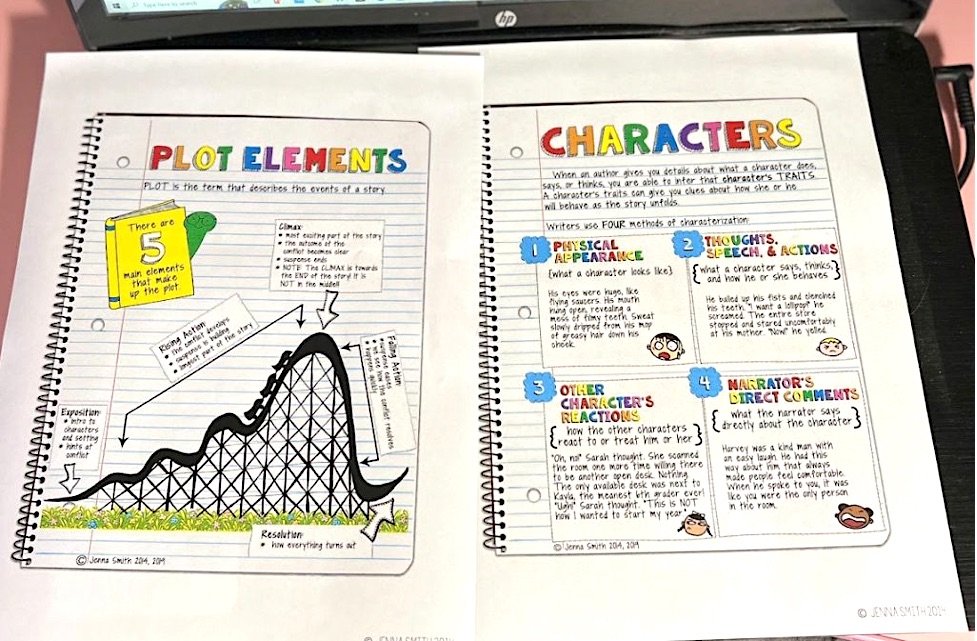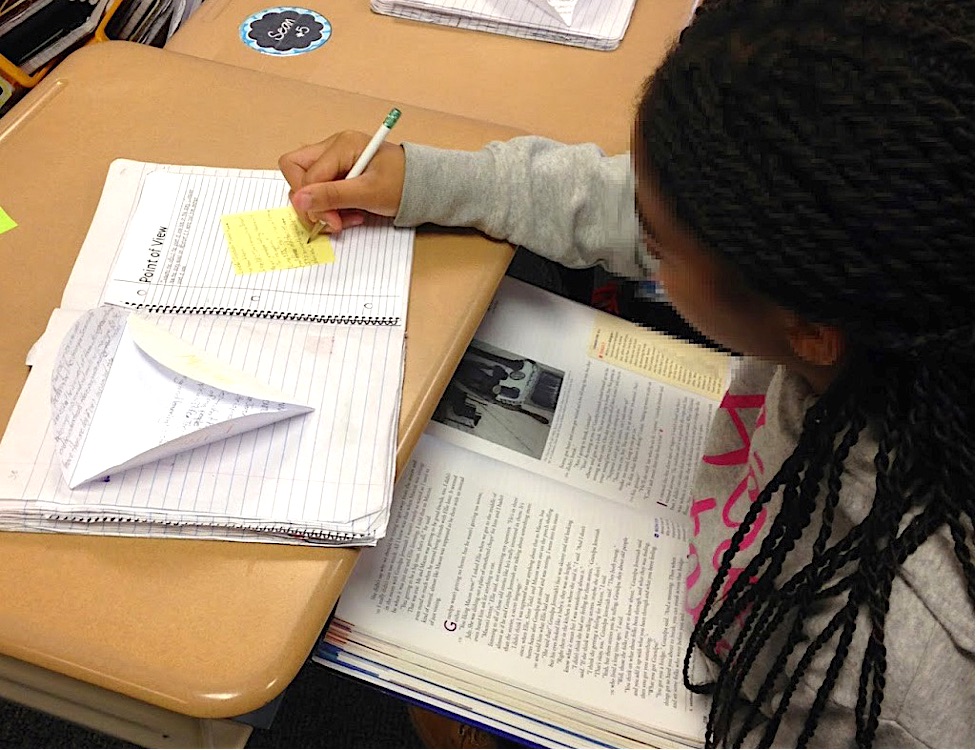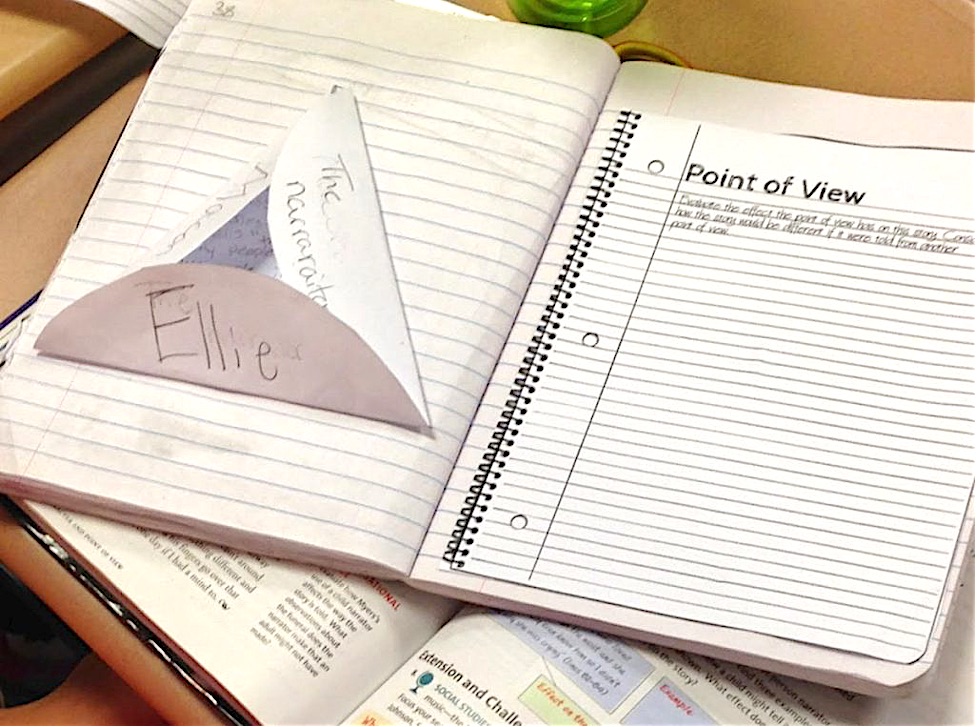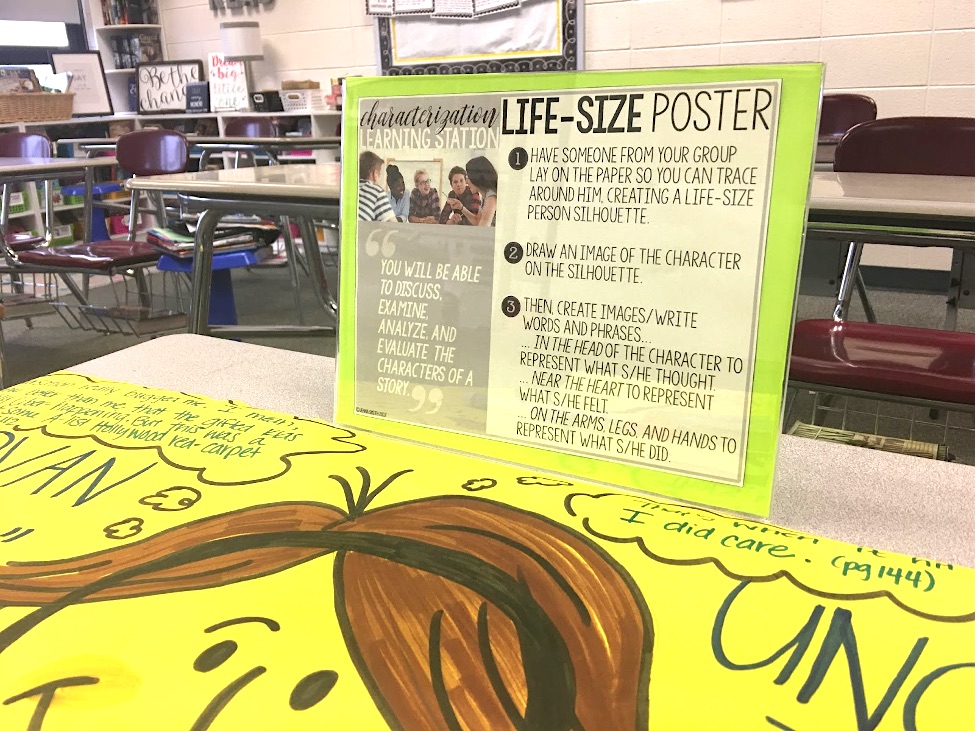It’s Time to Bring Back the Interactive Notebook
By Jenna Smith

Something I’ve realized is that I’ve been planning for WAY TOO MUCH screen time. During quarantine and remote learning, screens were the only tool we had. And admittedly, I got really dependent on it. But now that we are a few years out, I’ve decided that I’m really going to slow my roll when it comes to Chromebooks, and go back to some of the methods that worked best for my kids prior to remote learning.
And thankfully, I know JUST where to start… Interactive Student Notebooks.
I’ve used ISNs for years, but since 2020, I’d really reduced the amount of time we spent in them because digital assignments are just so easy. Over the summer of 2023, during some annual reflection of my teaching practice, I began to see what this increased screen time was doing to engagement. I’ve been fully committed to bringing ISNs back in all their glory during the 2023-24 school year.
Teaching with interactive student notebooks
It takes some time and preparation to make ISNs work for you and your students, but you will certainly see a good return on your investment. Before starting, there are a few things to consider.
First, decide the kind of notebook you want to use. I prefer hard cover, marbled notebooks. I get the ones with 100 sheets, giving me 200 pages to work with. And the very first thing to have the kids do when they get their notebooks is to number all the pages. This allows us to keep a working Table of Contents that is consistent and accurate.
Next, consider your supplies. I have scissors, white glue, crayons, and markers available for the kids to use, and I keep them in a convenient spot in the room. Figure out a quick, simple routine for kids to get what they need at the start of class and return their supplies at the end of class. Then practice it again and again until it becomes automatic.
Don’t be surprised if your middle schoolers need a little guidance on how to appropriately use the supplies. It never ceases to amaze me how many students need reminders on how to carry scissors and how to use white glue!
One last consideration is to be patient and have grace. Mistakes will be made. There will be days when you completely over- or underestimate the timing of a lesson. You will have groups that just can’t manage the foldable organizers, and you wind up mostly filling your notebooks with anchor charts. It’s all okay.
The point isn’t to create “perfect” notebooks, but to introduce helpful tools for your students to use. And just because ISNs aren’t always pretty, doesn’t mean they don’t serve their purpose.
Interactive notebooks in action!
If Interactive Student Notebooks are new to you, let me break down how we use them in my classroom. Here is a timeline of how we approach a piece of literature:
►Day One:
1. I introduce our story and provide any relevant background knowledge. I keep this short and sweet… about a 10-15 minute chat.
2. The students listen to (either I read it or we listen to it on our audio anthology) or independently read our story.
►Day Two:
1. I introduce the skill or device we will be discussing within the context of our story and give students the literary analysis question that they will be answering. Typically, I do this by reviewing our notes from earlier in the unit (which are also in our Interactive Student Notebooks), and then reading and breaking down the question.
2. Then students reread, using Post-Its to mark places in our story that we should go back and examine.
3. We come back together and discuss the places where students put their Post-Its and how those spots are relevant to our question.
4. I distribute the foldable organizer that we will be using to help us sort our thinking and find evidence that will support our answer to the literary analysis question. Students then reread again, this time focusing on the specific details necessary to complete the organizer. We do all of the work in our Interactive Student Notebook.
►Day Three:
1. Students participate in a Literary Analysis Station designed to zero in on our skill even more! Here they discuss and often, yes… REREAD, the text in detail.
►Day Four:
Students answer the literary analysis question. This is just practice, so they can ask me for assistance.
►Day Five:
We take a quiz on our story. I allow students to use the text for their quiz because it is not about how much they’ve memorized, but rather how well they can make assertions about the story and support it with evidence. So chances are when they take this quiz, they are rereading yet again.
Watch Jenna’s how-to video on Interactive Notebooks with tips and lessons learned
Experts by week’s end
So that’s one piece of literature, read and reread and reread for analysis several times over a week! I can absolutely attest that, by the end of the week, most of kids are experts on how the skills and devices we cover are exemplified in the story. And even my most struggling readers can hold their own in complex conversations regarding the text.
If you have never tried Interactive Student Notebooks, I urge you to give them a go! And then come back here and share your experiences. I’d love to hear how it goes for you!
Jenna Smith is a middle grades ELA teacher and popular blogger at Musings from the Middle School. During her nearly two decades of teaching, Jenna has also been a resource co-teacher and a basic skills specialist. She lives with her teacher-husband and four children in south New Jersey. Follow her on Instagram and Facebook.
Busy teachers who are interested enough in Jenna’s specific interactive notebook strategies to invest in her trove of ready-made materials at TPT can visit her store there.



































